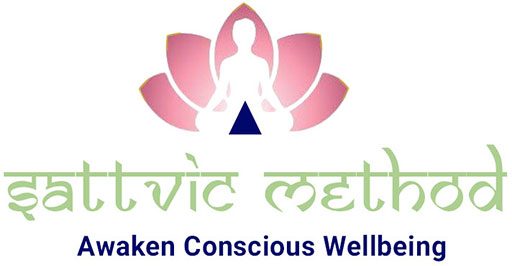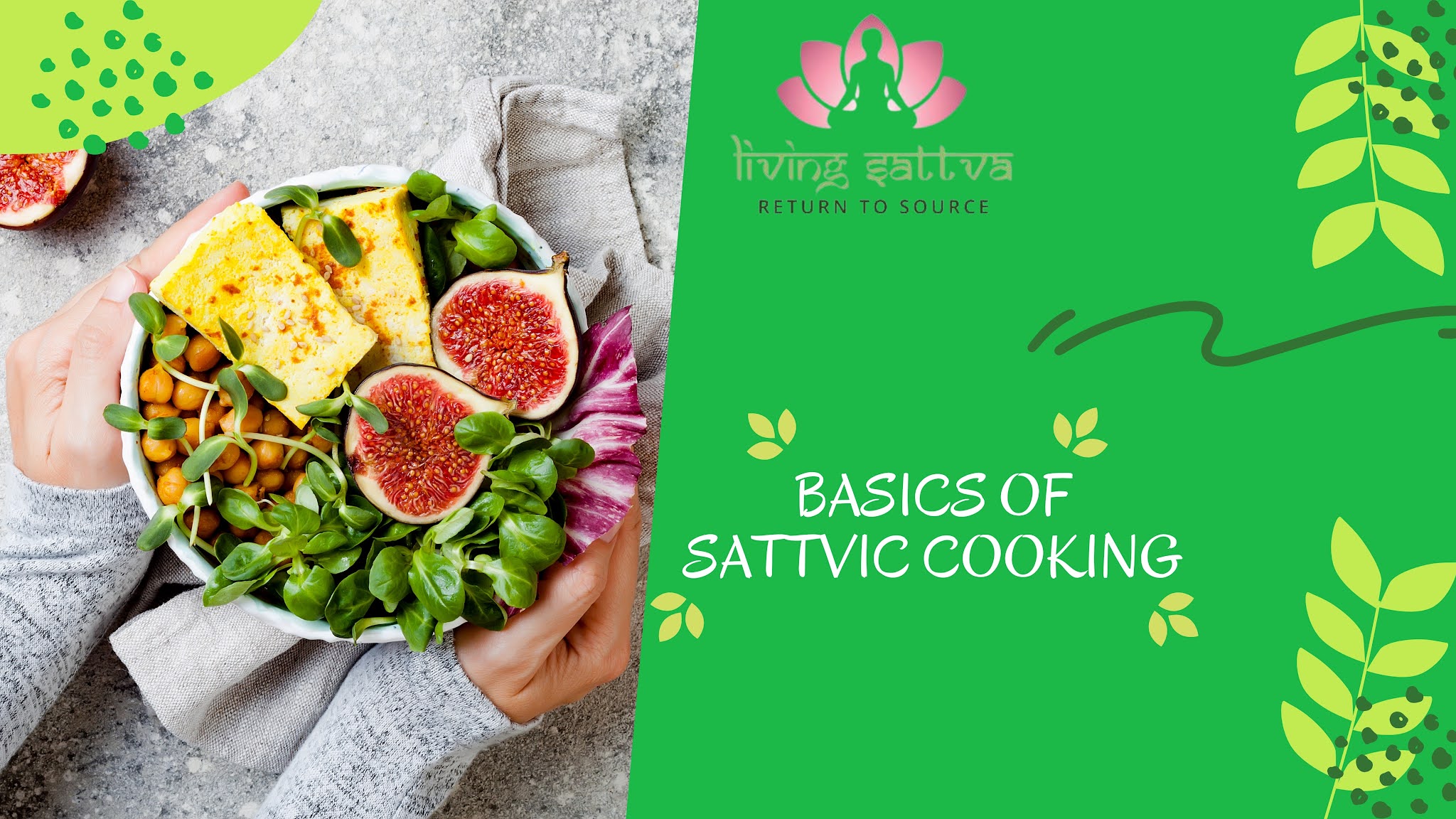There are about 400,000 vegetarians worldwide. Gallup poll (2018) showed that 5% of US adults identify themselves as vegetarians. The number is slightly higher in Canada with 7.1% and lower in Britain (2%). Although for various reasons, most vegetarians have identified the need to learn to cook with delicious vegetables and spices. People have identified multiple reasons to learn vegetarian cooking. Sattvic cooking is a form of vegetarian cooking from the Hindu tradition that has given the world Mantra chanting, Yoga, and Mindfulness meditation.
What is Sattvic cooking?
Sattvic cooking is a form of cooking that emphasizes using locally available vegetables and fruits, appropriate spices, and light cooking. Oil and artificial sweets are used sparingly, and refined foods are avoided altogether. Everything about sattvic cooking, from the choice of vegetables and spices to the combination of lentils carefully selected to provide intense benefits to your body and consciousness.
Many sattvic recipes require no cooking at all! For people who are not ready to eat uncooked food, it is best to select recipes that require cooking. However, sattvic recipes do not ask for double processing of any food item. Sattvic foods are lightly flavored and do not contain much fat or sweet. There is a balanced taste in sattvic food.
How to make a sample sattvic meal?
There is an excellent range of flexible processing involved in making sattvic food. The highest kind of sattvic food you can feed your body is water and doing Upavasa. This blog post explains more about Upavasa and how it can help you build a strong body. The next level of sattvic food is consuming liquid foods. The third level of the sattvic meal is eating uncooked or raw sattvic foods as a part of your meal plan. Finally, the fourth level is to include solid foods in your meal plan.
The format of a traditional sattvic meal might come as a surprise to you. Contrary to other meal styles, an entire course sattvic meal begins with dessert and probiotics such as yogurt. Complex recipes and vibrant tastes form the middle course of the meal. After dinner, you will get to chew on digestive seeds such as fennel or areca nut and drink plenty of water.
Here is a simple 5-course sattvic recipe meal plan you can try—
- First course: Start with Payasam. Follow the recipe here.
- Second course: Follow this with Roti and eggplant Saung. If you eat gluten-free, try out Akki roti, and if you are allergic to eggplant, try this saagu recipe.
- Third course: creamy coconut rice with raita.
- Fourth course: try cabbage pakoda and coconut chutney.
- Fifth course: end your meal with non-sugary, preferably homemade yogurt. You can add rice to yogurt or dip your roti in it.
You can make any number of courses depending upon your time and availability of resources. However, because most sattvic recipes are filled with dense vegetables and tasty spices, most people make a single course meal.
Why do people eat sattvic food?
Sattvic food has healing properties produced by combining the chemicals found in vegetables and spices. Many sattvic recipes also help manage inflammation in our bodies. Chronic or severe inflammation damages our body when we choose foods that can trigger inflammation in our body. For example, white bread, muffins, other baked goods, fried foods, and sugary drinks can cause intense inflammation. The best way to manage inflammation is to eat better to beat it.
Most doctors now advise their patients to modify their eating habits. This includes choosing more green leafy vegetables, fruits, nuts, and olive oil instead of highly refined carbohydrates or red meat. Sattvic Kitchen is stocked with spices that add more than taste to the food. This blog post explains more about the sattvic pantry.
If you are concerned about the sattvic diet being a fad, don’t be. The sattvic diet has been around for more than 5000 years, and it will continue to stay as it is beneficial to people. Living Sattva’s blog post explains how the Sattvic diet is good for mind and body. Sattvic Kitchen uses a diverse variety of vegetables and spices that provide plenty of opportunities to develop, experiment, or replicate provided recipes. You may prefer eating foods in their natural state, while others in your home may prefer lightly cooked food. Also, for health reasons, you may want to avoid oil and sugar in your foods. If this is your condition, then try out some sattvic recipes.
Can you eat sattvic meals throughout the day?
Yes! Absolutely! You can eat sattvic recipes for breakfast, lunch, dinner, or snacks.
Here are some breakfast recipes you can try—
Try some of our popular lunch recipes: Turmeric rice, Poori, Saagu. Look up more recipes on our youtube channel or website.
If you crave a sugary snack with tea, try this Living Sattva’s Cake and Chai recipe.
For dinner, you can make a light recipe like Upma or a full meal; see up for more details.
Tips to make your life easier while eating sattvic foods
Here are five tips on how to make your life easier when you eat a sattvic food diet.
- Eat fresh home-cooked food for every meal. Avoid processed, frozen meals loaded with sugar, salt, fat, and other preservative chemicals. Foods you cook and store in the freezer are also a wrong choice. Depending on where you live, vegetables may be frozen for use later. Instead, choose foods that are free of chemical fertilizers or those with chemical preservatives.
- Add vegetables at every opportunity. It is easy to include more green leafy foods in every meal. For example, you can make cauliflower rice instead of regular rice. You can make a sweet potato base for your pizza. You can use coconut or sesame seed oil instead of lard.
- Add proper spices as needed. A tasty recipe does not have to be loaded with salt and chili pepper. It can have ginger and peppercorn for spices. Tamarind can add a tang to the food instead of the usual lime juice.
- Schedule enough time to cook every day. Many delicious sattvic recipes can be prepared in under 10 minutes. You can make an entire five-course meal in under an hour. Of course, it helps to have all the necessary ingredients handy.
- Take the stuff you can assemble when you travel.
You can eat a sattvic meal even when you travel. When fruits and vegetables are available in plenty, few ingredients you carry from home can make your meal delightful. Sign up for our newsletter to get more information on foods for the sattvic diet on the go.
Sattvic foods have much to offer for your health and overall wellbeing. Subscribe to Living Sattva’s free newsletter (comes once a month) and learn more about sattvic living.
Learn more about the spice blend that is right for you by completing this quiz.




I love sattvic vegetarian food! It’s my lifestyle for the last 15 years. Rani Iyer, congratulations on publishing this informative article! It’s packed with helpful tips and a bunch of links to learn more. Not to mention all the yummy recipes. Great for more energy, clarity of mind, weight loss, and gentle detox. Truly a delight to read. I hope it will inspire many more people to learn about sattvic veg food and that they will start eating this way.
Thank you for sharing insightful knowledge about healthy living
Loving us deliciously
❤️
My motto
Love Deliciously